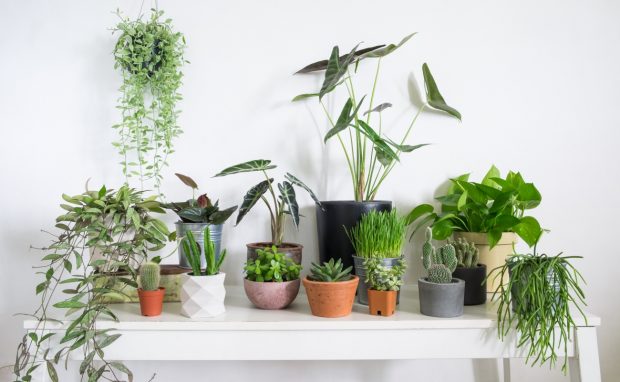Indoor plants are a great way to add color to your home, especially in the darker months. They are also very good at purifying the air and simply bringing nature inside. In short, they can make you feel more positive about life even on the darkest of days.

Of course, when you get high-quality plants, such as those offered by Foli8, you simply need to give them a little care and they will flourish. That leads to them outgrowing their current pot and needing to be replanted. Fortunately, this is easier than you think.
When To Re-pot
Most house plants are in pots with holes at the bottom that provide drainage. You then set the pot on a tray to catch excess water. When the roots of the plant start to stick out the bottom of the pot you know it is time to replant it.
Other signs include stilted growth, leaves changing color, and the usual signs associated with a plant that is struggling.
Steps To Re-Pot
Just follow these steps and your plant will be re-potted in no time.
Find A Pot
The first step must be to locate a pot larger than the one you have. While your plant may have a lot of growing to do, it is best not to choose one that is huge. Instead, choose one that is roughly twice the size of the pot they have outgrown, you can always re-pot them again.
Cover Drainage Holes
Cover the drainage holes in your pot with a porous material. A coffee filter is perfect. It ensures the soil stays in the pot where it belongs but allows water to drain out of the pot.
Add Soil
You can now add your new soil to the new pot. It is a good idea to include a little fertilizer in the soil. You will only need a small layer at the bottom of the pot at this stage.
Water Plant
You can now water your plant, this softens the soil and makes it easier to remove it with the root ball. Just water it as you usually would and wait five minutes.
Pull it out!
With the soil damp the plant should pull easily out of the pot. Take hold of it as close to the roots as possible and gently pull. It should work loose. If it doesn’t you may be able to cut or break the pot. But, if you want to keep the pot you will simply have to keep trying.
Prune If Necessary
Take a good look at the roots of the plant. It can help the plant to settle in the new pot if you trim the roots and leave just the main root ball.
Place In New Pot
Slide the root ball into the new pot and add soil to hold it firmly in place. Your soil should stay below the level of the leaves as this will cause mold on your plant.
Give it a little water and then monitor carefully for the next few days.



